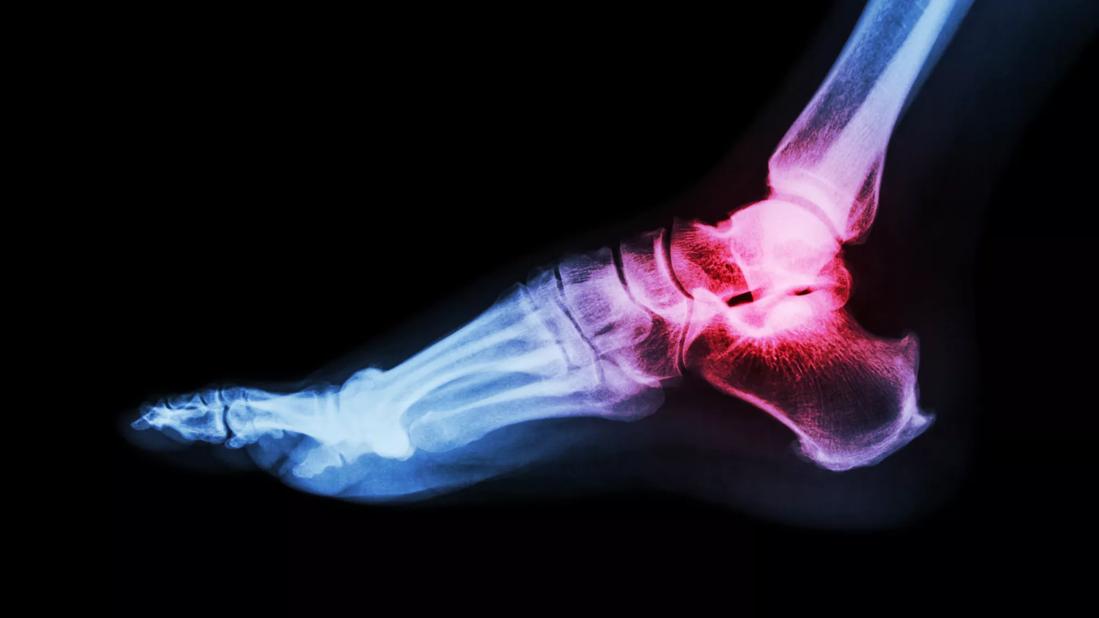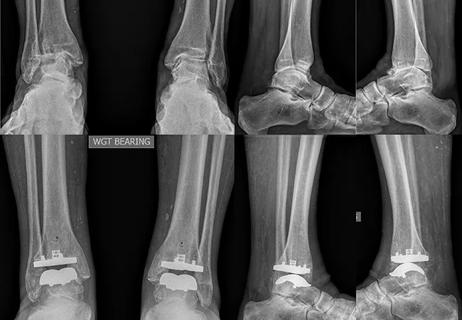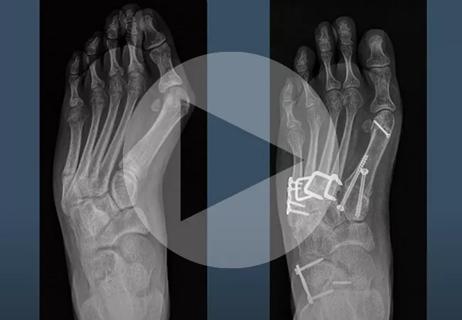Ankle arthritis can be more disabling than hip or knee arthritis

By Alan Davis, MD
Advertisement
Cleveland Clinic is a non-profit academic medical center. Advertising on our site helps support our mission. We do not endorse non-Cleveland Clinic products or services. Policy
Ankle arthritis is not as common as hip and knee arthritis, but it can be more disabling due to proximity of ground reaction forces. Total ankle replacement (arthroplasty) is a viable treatment option for ankle arthritis, and long-term results are favorable.
The key to any successful surgery is patient selection with appropriate indications. Ankle arthroplasty is best suited for middle-age and older patients with ankle arthritis who meet certain criteria (Table).
| Patient criteria for ankle arthroplasty |
|---|
| Middle age or older |
| Unsuccessful results with conservative management of ankle arthritis |
| Good bone stock |
| Limited deformity |
| Reasonable range of motion |
| Good tendon and ligament function |
| No major foot deformity below the ankle |
| Patient criteria for ankle arthroplasty |
| Middle age or older |
| Unsuccessful results with conservative management of ankle arthritis |
| Good bone stock |
| Limited deformity |
| Reasonable range of motion |
| Good tendon and ligament function |
| No major foot deformity below the ankle |
Most ankle arthritis is post-traumatic. Patients may present with rheumatoid or other inflammatory arthritis along with primary osteoarthritis. Fracture deformity and retained hardware are common.
Patients present with pain, swelling, stiffness and difficulty with weight-bearing activities, and also may have a sense of instability or weakness. It is not unusual to have grinding or catching sensations. Some patients may have notable deformity.
Initial treatment for ankle arthritis includes activity modifications, anti-inflammatory medications and physical therapy. If the patient has limited range of motion, a shoe with a rocker or convex sole can be helpful. Cortisone injections may help decrease inflammation.
If these treatments fail, bracing becomes an option to immobilize and offload the ankle. Surgery also may be considered.
When end-stage bone-on-bone arthritis is present, there are two choices for surgery. Ankle fusion (arthrodesis) is reserved for younger patients or those with large deformities, poor bone stock, or inadequate ligament or tendon function. Total ankle arthroplasty is an option for patients who meet criteria in the table above.
Advertisement
At Cleveland Clinic, we now perform total ankle arthroplasty with the help of pre-operative 3D scanning. The scans are used to produce 3D-printed patient-specific guides that help us ensure perfect sizing and alignment of the prosthesis during the case. This improved precision leads to higher success rates and greater longevity of ankle replacements.
Patients are casted initially after surgery, then transitioned to a walking boot. Full recovery may take three to six months for the patient to return to the desired levels of activity. Most patients can expect to walk pain-free and do all but heavy-impact loading functions.
Advertisement
Advertisement

Even young patients with high activity demands can benefit

Arthrodesis is not the only surgical option

Surgeon corrects skew foot to address repeat injuries

Pain, quality of life and other patient-reported data are significantly improved one year after surgery

Many amputations can be prevented

Staged cavus repair and total ankle arthroplasty

Causes are multifactorial, but good surgical decision-making and technique reduce failures

Cleveland Clinic is among the first in the U.S. to perform the procedure